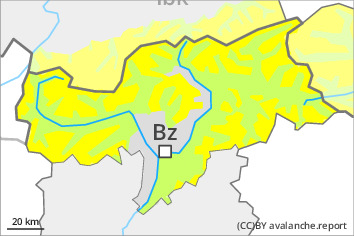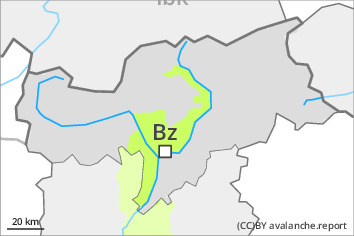
Danger level
 | treeline |
|  |
|  |

Fresh wind slabs are mostly easy to recognise and prone to triggering.
The fresh wind slabs can be released by a single winter sport participant in some cases above the tree line. This also applies in areas close to the tree line. Especially gullies and bowls are unfavourable. The wind slabs are clearly recognisable to the trained eye. They are to be avoided as far as possible. In isolated cases avalanches are medium-sized. Even a small avalanche can sweep winter sport participants along and give rise to falls.
In addition further very occasional gliding avalanches are possible, in particular on steep east, south and west facing slopes below approximately 2600 m. In isolated cases the gliding avalanches are quite large, in particular in the regions with a lot of snow. Areas with glide cracks are to be avoided.
Snowpack
dp.6: cold, loose snow and wind
Some snow will fall in particular in the north. As a consequence of a sometimes strong wind from northwesterly directions, further wind slabs will form in the course of the day. The fresh wind slabs are lying on surface hoar in some places. These are mostly rather small but can in some cases be released easily. The somewhat older wind slabs are unlikely to be released now.
Towards its base, the snowpack is largely stable. Snow depths vary greatly above the tree line, depending on the infuence of the wind. The snowpack will be subject to considerable local variations.
Tendency
The fresh wind slabs remain prone to triggering.


